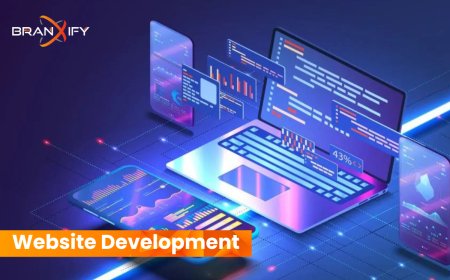Blended Learning and eLearning Translation Services: A Powerful Combo
Blended learning refers to a learning model that combines face-to-face classroom instruction with online learning experiences. It merges the best of both worlds: the personalization and interactivity of in-person learning with the flexibility and scalability of digital content. This approach empowers learners to access educational materials at their own pace while still engaging in real-time discussions, mentorship, and group activities.

Two major trends reshaping the way individuals learn and organizations train are blended learning and eLearning translation services. When combined, these two approaches offer a powerful solution that enhances accessibility, effectiveness, and global reach. This article explores how the integration of blended learning and eLearning translation services creates a dynamic learning experience suitable for the modern world.
What Is Blended Learning?
Blended learning refers to a learning model that combines face-to-face classroom instruction with online learning experiences. It merges the best of both worlds: the personalization and interactivity of in-person learning with the flexibility and scalability of digital content. This approach empowers learners to access educational materials at their own pace while still engaging in real-time discussions, mentorship, and group activities.
Key components of blended learning include:
-
In-person instruction
-
Digital modules or online resources
-
Self-paced assignments
-
Interactive assessments
-
Collaboration tools (e.g., discussion forums, video conferencing)
This method is particularly popular in corporate training, higher education, and K-12 environments as it allows institutions to personalize instruction while maintaining structure and accountability.
The Rise of eLearning and Global Expansion
With the increasing digitization of education and training, eLearning solutions have become an integral part of learning strategies worldwide. However, one of the major challenges in expanding digital content to global audiences is language. English may be dominant in the digital world, but learners across different regions often prefer or require content in their native language to grasp complex ideas effectively.
This is where eLearning translation services come into play.
What Are eLearning Translation Services?
eLearning translation services involve converting digital learning content from one language to another while adapting it culturally and contextually. These services are not just about direct translation; they often include localization, which adjusts visuals, idioms, examples, voiceovers, and UI elements to resonate with the target audience.
Key services include:
-
Text translation and localization
-
Subtitling and voiceover dubbing
-
Content adaptation for cultural relevance
-
Multilingual learning management system (LMS) integration
-
Testing and quality assurance in multiple languages
These services ensure that learners around the world can access, understand, and engage with eLearning material regardless of language barriers.
Why Blended Learning + eLearning Translation Is a Game-Changer
When blended learning strategies are supported by professional eLearning translation services, the result is a highly accessible and globally scalable learning experience. Heres why this combination is so effective:
1.Enhances Accessibility and Inclusion
Blended learning provides flexibility in how content is delivered, while translation services ensure that its accessible to people of different linguistic backgrounds. Whether a learner is accessing digital modules at home or participating in group discussions at the office, having content in their preferred language reduces confusion and enhances understanding.
2.Boosts Engagement and Retention
Language is a key component of engagement. When learners interact with content in a language theyre comfortable with, theyre more likely to absorb and retain information. Pairing in-person support with localized digital content ensures learners stay motivated and involved throughout their educational journey.
3.Supports Corporate Globalization Efforts
For multinational corporations, training materials must cater to a diverse workforce. Blended learning supported by translation services allows companies to maintain consistency in training while customizing delivery based on local language and cultural context. This unified yet personalized approach promotes uniform knowledge dissemination and boosts employee performance.
4.Improves ROI on Training Investments
Creating training materials is resource-intensive. Translating and localizing existing eLearning modules allows organizations to maximize the return on their initial investment. Instead of creating separate courses for each region, they can repurpose content across languages and cultures through expert translation services, ensuring consistency and cost-efficiency.
5.Promotes Lifelong Learning
The flexibility of blended learning, combined with the comfort of learning in ones native language, fosters a culture of continuous improvement. Learners are more likely to pursue additional training and education if the content is accessible and relatable. This combination supports lifelong learning among students and professionals alike.
Best Practices for Integrating eLearning Translation in Blended Learning
To effectively implement this powerful combination, organizations and educational institutions should consider the following best practices:
1. Plan Multilingual Content from the Start
If you anticipate needing content in multiple languages, design your blended learning modules with translation in mind. Use simple, clear language, avoid idioms, and create modular content that can be easily adapted.
2. Partner with Professional Translation Services
Avoid using automated translation tools for educational content. Professional eLearning translation services offer cultural sensitivity, accuracy, and quality assurance. They understand the nuances of instructional design and how to maintain educational integrity across languages.
3. Use Translation-Friendly Authoring Tools
Choose eLearning development platforms that support multilingual exports and localization. Tools like Articulate Storyline, Adobe Captivate, and Lectora allow for easy duplication and translation of content.
4. Incorporate Visual and Audio Translations
Translating only the text may not be sufficient. Include translated audio, voiceovers, and subtitled videos. These elements enhance comprehension and cater to different learning preferences.
5. Test Content with Native Speakers
Before rolling out translated content, test it with native speakers to ensure accuracy, appropriateness, and ease of understanding. Feedback from actual learners helps refine the materials.
Future Outlook: Technology Driving the Combo Forward
As technology evolves, so do the possibilities for blended learning and translation. AI-driven translation tools, real-time language support, and adaptive learning platforms are making it easier to create personalized, multilingual content at scale.
Moreover, immersive technologies like virtual reality (VR) and augmented reality (AR) are being integrated into blended learning environments. When combined with multilingual capabilities, these technologies offer engaging and interactive learning experiences that transcend geographical boundaries.
Conclusion
The blend of blended learning strategies and eLearning translation services offers a winning combination for inclusive, effective, and scalable education. Whether in corporate training, academic institutions, or government programs, this approach helps bridge language and cultural gaps, making education truly global.
By investing in both flexible learning formats and high-quality translations, organizations can empower learners everywhereno matter their language or locationwith the tools they need to succeed in a knowledge-driven world.



































